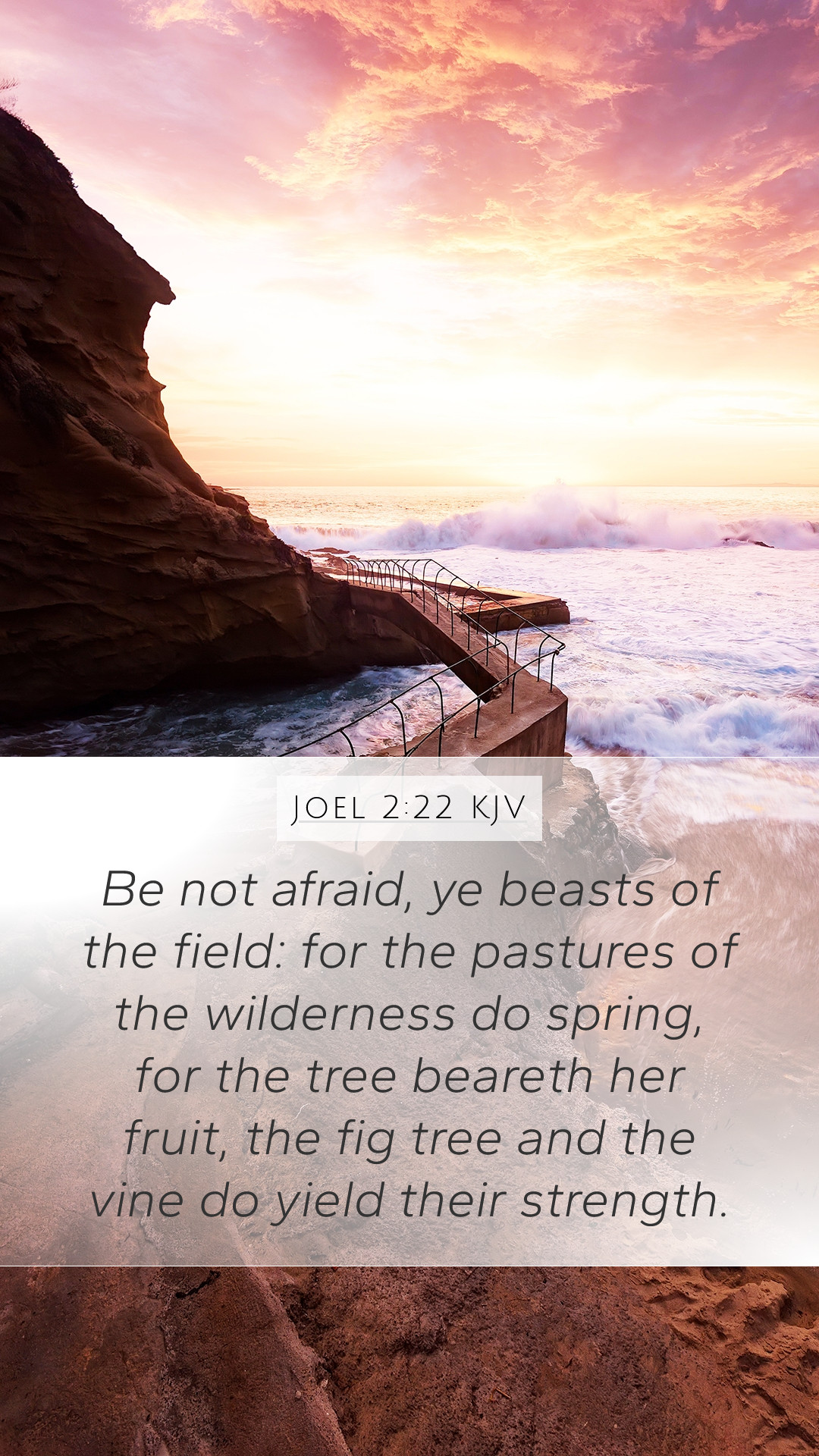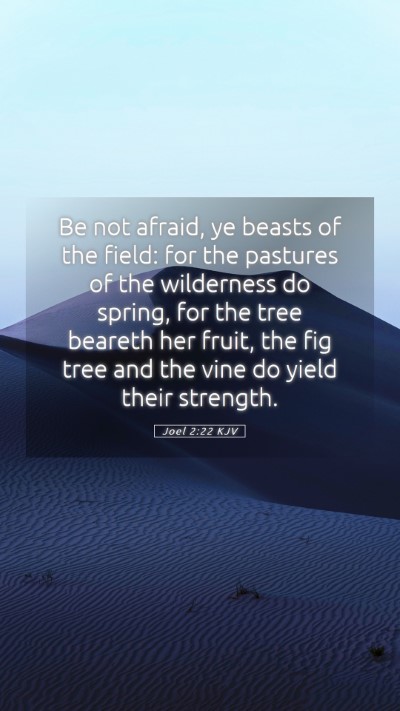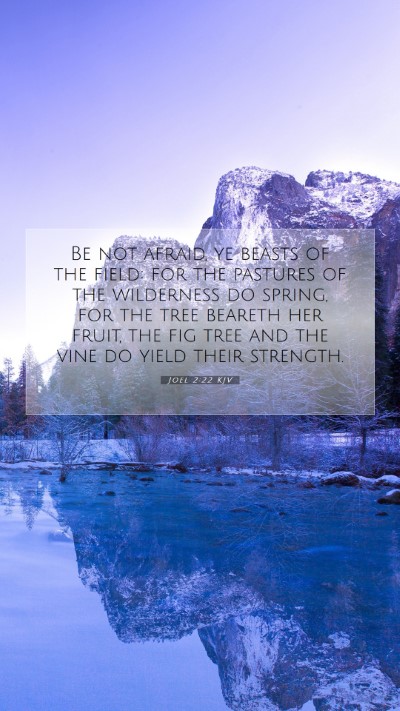Understanding Joel 2:22
Joel 2:22: "Fear not, ye beasts of the field: for the pastures of the wilderness do spring, for the tree beareth her fruit, the fig tree and the vine do yield their strength."
Bible Verse Meanings
The verse from Joel 2:22 calls for reassurance and hope amid devastation. It speaks to both the natural world and humanity, suggesting that even in times of trouble, God’s provisions and blessings remain available. The pastures springing forth indicate restoration after judgment, highlighting the Lord's mercy.
Bible Verse Interpretations
Matthew Henry explains that this verse reflects the prosperity that will return to the land of Israel after their repentance and return to God. The animal kingdom is also included in this healing, symbolizing overall restoration in creation as a sign of divine favor.
Albert Barnes emphasizes the idea that the restoration of agriculture and the bounty of nature offer a powerful contrast to the previous devastation brought about by locusts. This vivid imagery conveys God’s promise to not only restore but also enhance the conditions of life for His people.
Adam Clarke notes the specific mention of the fig tree and the vine, representing two significant sources of sustenance and joy for the Israelites. This emphasizes that God will not only bring back what was lost but will also bless them with an abundance.
Bible Verse Explanations
This verse can be interpreted in several important ways:
- Divine Assurance: God reassures His creation that there is no reason for fear as renewal and prosperity will come.
- Restoration: It symbolizes a turning point from devastation to restoration, indicating hope for the future.
- Holistic Blessings: The verse encompasses both agricultural and pastoral renewal, reflecting God's comprehensive care for all aspects of life.
- Community Unity: As the land flourishes, both humans and animals thrive, symbolizing a unity in creation under God's providence.
- Judgment and Mercy: The contextual backdrop of previous judgment shows how God's mercy prevails and leads to repentance and restoration.
Bible Study Insights
Bible study groups can use this verse as a focal point to discuss themes of restoration, divine provision, and community support in times of difficulty. It is a good example of how scripture can provide not just historical context but also current-day applications for hope and resilience.
Cross References
For further understanding, consider these related Bible verses:
- Isaiah 35:1-2: Speaks of the wilderness rejoicing and blossoming.
- Jeremiah 31:12: Promises that they shall come and sing in the height of Zion, and shall flow together to the goodness of the Lord.
- Haggai 2:19: The promise of blessings from the harvest.
- Psalm 126:5-6: Suggests that those who sow in tears shall reap in joy.
Conclusion
The verse from Joel 2:22 serves as a powerful testament to God’s enduring mercy and promise of restoration. Understanding this verse requires a deeper engagement with the broader themes of Scripture—reassurance amid fear, the cyclical nature of judgment and mercy, and community support. Through this kind of biblical exegesis, believers can find inspiration and hope applicable to their daily lives, while also enriching their Bible study lessons.
Final Remarks on Interpretation
This verse is not just about a specific historical moment but resonates with the universal experience of fear, loss, and renewal. By applying its lessons, individuals can navigate their own life challenges with the understanding that restoration is always within reach, as articulated through the rich tapestry of Scripture.


